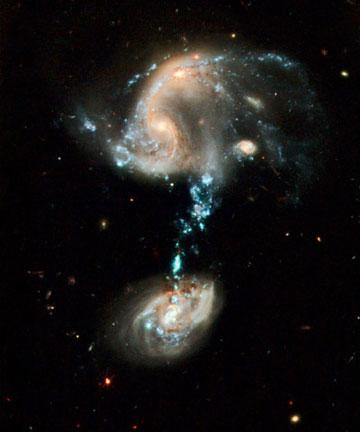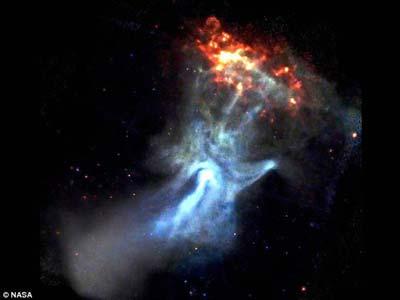Source: Xinhua
04-24-2009 09:37
Special Report: Tech Max
 |
| This image provided by NASA Tuesday April 21, 2009 shows a peculiar system of galaxies known as Arp 194. This interacting group contains several galaxies, along with a 'cosmic fountain' of stars, gas, and dust that stretches over 100,000 light-years. The most striking feature of this galaxy troupe is the impressive blue stream of material extending from the northern component. This 'fountain' contains complexes of super star clusters, each one of which may contain dozens of individual young star clusters. The blue color is produced by the hot, massive stars which dominate the light in each cluster. Overall, the 'fountain' contains many millions of stars. This picture was issued to celebrate the 19th anniversary of the launch of the Hubble Space Telescope aboard the space shuttle Discovery in 1990. During the past 19 years Hubble has made more than 880,000 observations and snapped over 570,000 images of 29,000 celestial objects. The Space Shuttle Discovery placed the Hubble Space Telescope into Earth orbit on April 25, 1990. (Photo: NASA) |
Related:
"God´s Hand" captured; shape spanning 150 light years
BEIJING, April 15 (Xinhuanet)-- It looks like a hand of God reaching out into the cosmos, but NASA says the display is caused by a young and powerful pulsar.
 |
| A photo of Pulsar B1509 taken by NASA's Chandra X-ray observatory(Photo: NASA) |
Taken by NASA's Chandra X-ray observatory from it's orbiting 360 miles above the Earth, the recently released photo of Pulsar B1509 captures the X-Ray nebula in a state shaped like a human hand. Full story >>
